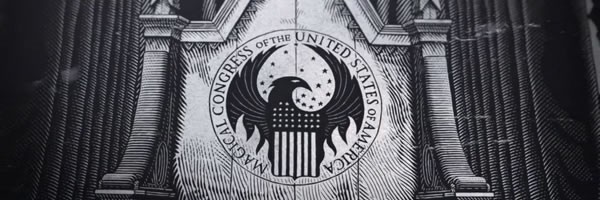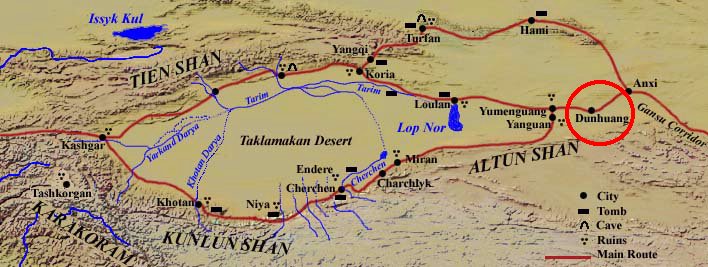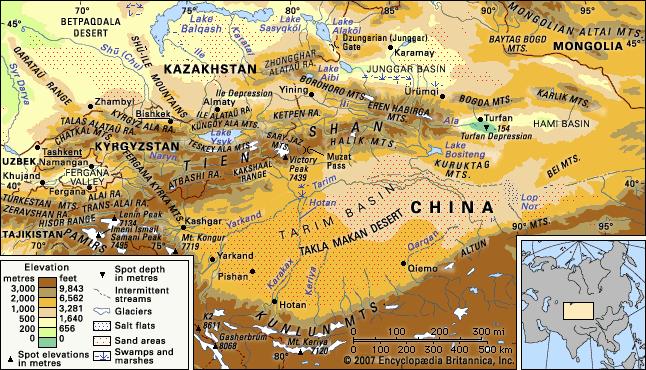Modern Armies that Tried to Win Wars with Magic
/They say that to win a war, you must be willing to do whatever it takes. The use of threatening words and brute force are all necessary for winning battles, but you’re going to need to take the extra mile if you want an assured victory. If you take a good look at our history of modern warfare, you’ll see just how much science has had a hand in the victory of one military force and the defeat of another. From coming up with the most effective means for gathering intelligence in times of conflict and fragile peace to developing weapons of mass destruction that put an end to a devastating global war and thwarted a powerful and influential empire, it cannot be denied just how many military groups have benefited from the bright minds of scientific experts.
But even in our supposedly technologically-advanced and scientifically-enlightened world, you might be surprised to know just how far our modern armies have gone all in the name of victory. Some have approached magicians and illusionists for tips and tricks in the art of deception while others have attempted to expand the abilities of the human mind beyond the boundaries of conventional science. There are also those that dared to construct weapons of mass destruction that you probably only heard of in literary materials of the science fiction genre. Others, however, have sought out the rumored ancient items mentioned in myths and legends that promised unlimited powers to those who manage to find them and possess them.
And so, let us enumerate five (5) cases of when modern armies and governments have tried to resort to magic or the supernatural to win real wars and achieve supremacy over their enemies.
#1 – The United States Government and the CIA Manual of Trickery & Deception
You’ve watched the movies and the TV shows - from the Bourne Identity films to 24 to Alias and more – and you’ve probably wondered if any of what they have shown in these entertainment pieces are anything like how actual spies and CIA field agents operate in the real world. As it turns out, some of what many actors have done in these spy films are not so far from what real intelligence agents have done in reality. In fact, there’s even an official manual for it.
Back in 2010, the Official CIA Manual of Trickery and Deception was declassified and released for the perusal of the general public. The manual was written during the Cold War by an American magician named John Mulholland. The book was essentially used in training intelligence agents of the CIA on how to use misdirection and deception in completing their assigned missions. The manual also teaches these CIA operatives on the best ways to conceal weapons, how to use sleight of hand to discreetly pass information, take items or put drugs in people’s drinks, and how to assassinate their targets using only a poisoned pen.
#2 — The Allied Forces and the Disappearance of the Suez Canal
Perhaps the most popular real case of an army using a magician to win a war is that of British stage magician Jasper Maskelyne and his alleged large-scale concealment of the Suez Canal during the Second World War.
In 1949, Maskelyne published a ghostwritten memoir titled “Magic – Top Secret,” in which he detailed his exploits in aiding the Allies during World War Two. The British magician was allegedly a part of a special unit focused on the war effort along the Suez Canal. Using his extensive experience and knowledge in the art of illusion, he devised a large-scale illusion system to conceal the Suez Canal and to misdirect the German flying bombers in the sky. To do so, he built an equipment referred to as “dazzle lights,” which was made of a revolving cone of mirrors. It produced a spinning light that was around nine miles wide, and it dazzled and disoriented German pilots, which consequently, made them drop their bombs off-target.
#3 — The British Government and the Use of Astrology
World War II was not an easy time from either side of the war effort, and every military strategy was explored, even the most absurd ones. It would have been easy for the British government to defeat the Nazis had they known everything that was running in Adolf Hitler’s unpredictable mind. And so, they tried to do so by hiring an astrologer to write horoscopes for Hitler and several other Nazi leaders.
In 2008, declassified documents released to Britain’s National Archives catalogs revealed that the British forces assigned an astrologer named Louis de Wohl to create fake astrological reports about the Nazi leaders and distributed them throughout Nazi Germany to demoralize the public. However, Wohl took a step further by offering his services to predict Hitler’s advisers' advice. And so, Wohl typed out a report titled “A Survey of 1943,” which was a seven-page guesswork of when Hitler’s major attacks will take place, and the possible fortunes of important figures from both sides of the war.
Wohl was also sent off by Winston Churchill to convince the United States to join the war, but following the events of Pearl Harbor, his convincing powers and astrological abilities were no longer required. And as disclosed in the declassified documents of the MI5, the British government came to regret their decision to involve Wohl in their military efforts, as many of them eventually led to the conclusion that he was nothing more than a charlatan that liked to boast of his secret role in the war.
#4 – The Soviets and Their Extensive Study on Psychokinesis
During the Cold War, the Americans and the Soviets tried to outdo the other in many things, the most popular of which is probably the space race that resulted in the first of many successful missions that landed mankind on the moon. For both sides, it became necessary to explore every avenue to win the Cold War, including the paranormal. And so, both the Americans and the Russians raced against each other to be the first one to figure out how to harness the unknown by expanding the human mind and exploring individuals’ potential abilities in telepathy and psychokinesis.
So far, there has been no widely-accepted evidence that confirms the possibility that humans can be trained to read other people’s minds or move objects without lifting a finger. But between the United States and the Soviets, it seems the latter’s research about the paranormal was more on point than those done by the Americans. Amid the Cold War, the Defense Advanced Research Projects Agency – also known as DARPA – wanted to evaluate and compare the milestones achieved by the United States and the Soviets in researching about the paranormal. And so, they granted RAND Corporation the authority to conduct a study about it, the results of which was published in the early 1970s. The organization reached the conclusion that the Soviets’ research on the supernatural was more specifically geared towards biology and physics in comparison to what the United States came up with, which was largely based on psychological theories.
The Soviets did not only consider using telepathy as a means of communicating with submarines without the aid of electronic equipment, but they also explored the possibility of training their cosmonauts to tap on their precognitive powers to foresee potential accidents in space. They were also interested in using mental imagery or psychokinesis to move objects, which would be helpful in disrupting the guiding system of intercontinental ballistic missiles. Given the specificity in how the Soviets handled their paranormal research, they were the ones more likely to harness what the paranormal world had to offer if it really existed.
#5 — The Nazi and The Search for the Holy Grail and the Spear of Destiny
You’ve probably watched Indiana Jones and the Last Crusade in which the Nazis were on the hunt for the mythical and magical Holy Grail. And while we can’t say for certain if they did encounter an immortal knight or solicited the expertise of an archaeologist with a dashing appearance equal to that of Harrison Ford, the Nazis did look for the Holy Grail in real life, along with other religious ancient artifacts like the Spear of Destiny.
According to the book “The Desecrated Abbey” written by Montserrat Rico Góngora, Heinrich Himmler, the head of the Nazi SS, embarked on a top-secret mission during the Second World War to acquire the Holy Grail at an abbey in Spain. The book claims that the Reichsführer-SS believed that Jesus Christ was not the King of the Jews, and was in fact of Aryan blood. And so, Himmler allegedly thought that if the Nazis gained possession of the Aryan Holy Grail, the ancient artifact would grant him supernatural powers and help the Germans win the global war. Unfortunately for the Nazi leader, no such magical cup was found, and if he did find one, it was never disclosed to the public.
There are also stories and historical records claiming that Hitler himself acquired the Spear of Destiny – the lance that pierced the body of Jesus to confirm his death – back in 1938 following his annexation of Austria. According to legend, whoever gains possession of the Spear also gains the power to decide the fate of the world. However, once he ceases to be its owner, he meets his death and is refused entry to the gates of Heaven. While what he found may very well be a very expensive knock-off of the Holy Lance, Hitler brought this Spear to Nuremberg for safekeeping.
In 1945, U.S. soldiers under the leadership of General Patton got a hold of the spear Hitler thought was the real Spear of Destiny. Interestingly, Hitler died soon after he lost ownership of the lance, having committed suicide in his bunker. It seems to confirm the legend that losing possession of the spear results to the owner’s death, but we won’t be able to test this theory again unless we’re hoping to encounter another tyrannical global leader, so perhaps it is better that the spear Hitler discovered is being safely kept inside the Weltliches Schatzkammer Museum in Vienna instead.
People at war live in violent and uncertain times, which is why it is not that surprising that even in the modern world, opposing sides of a conflict are desperate to find ways to turn the tides of these bloody battles in their favor. To some of us, the idea of using magic, exploring psychic defense or searching for lost ancient artifacts all for the sake of winning a war seems an absurd waste of time. However, to the leaders of these modern armies, it is a factor that they could not discount so easily.
After all, they could not risk not giving magic and the supernatural the time of day when their enemies were spending resources to possibly utilize them as weapons. What if their enemies succeeded? How could they outsmart an enemy that has mastered the art of deception and misdirection? How could they fight against thousands of troops that can easily kill their opponents and predict the future using only their minds? How could they win against a colossal army in possession of a powerful ancient artifact that pretty much made them invincible?
As commanders that lead thousands, if not millions, of soldiers, these military and intelligence leaders chose to exhaust all possibilities to end the conflict in their favor, even if it meant resorting to magic or the supernatural. Perhaps, from their perspective, they would rather have their pursuit for such things end up as a fruitless endeavor rather than neglect that option and allow their enemies to use it against them later on.
SOURCES:
http://listverse.com/2013/03/05/10-attempts-to-use-magic-and-the-supernatural-to-win-wars/
http://www.cracked.com/article_24722_6-modern-armies-who-tried-to-win-wars-using-magic-sci-fi.html
https://www.thrillist.com/vice/10-secret-lessons-from-the-cia-manual-of-trickery-and-deception
https://archive.org/stream/cia-manual-trickery-deception-2009/cia-manual-trickery-deception-2009_djvu.txt
https://www.magictricks.com/war-magician.html
http://www.nbcnews.com/id/23456119/#.WWjSIIiGPb1
http://www.independent.co.uk/news/uk/home-news/revealed-how-mi5-recruited-an-astrologer-in-plot-to-outwit-hitler-790876.html
https://blogs.scientificamerican.com/news-blog/us-and-soviet-spooks-studied-parano-2008-10-29/
https://www.wired.com/2007/12/rand-russians-t/
http://io9.gizmodo.com/5889471/what-is-the-spear-of-destiny-and-where-can-you-get-it
http://www.salon.com/2016/03/04/relic_hunter_a_missing_christian_relic_the_fall_of_nazi_germany_and_a_mystery_that_flummoxed_historians_for_centuries/












































































